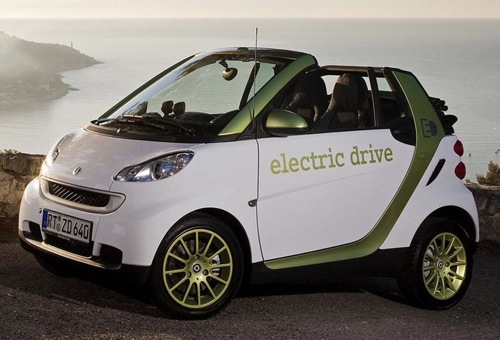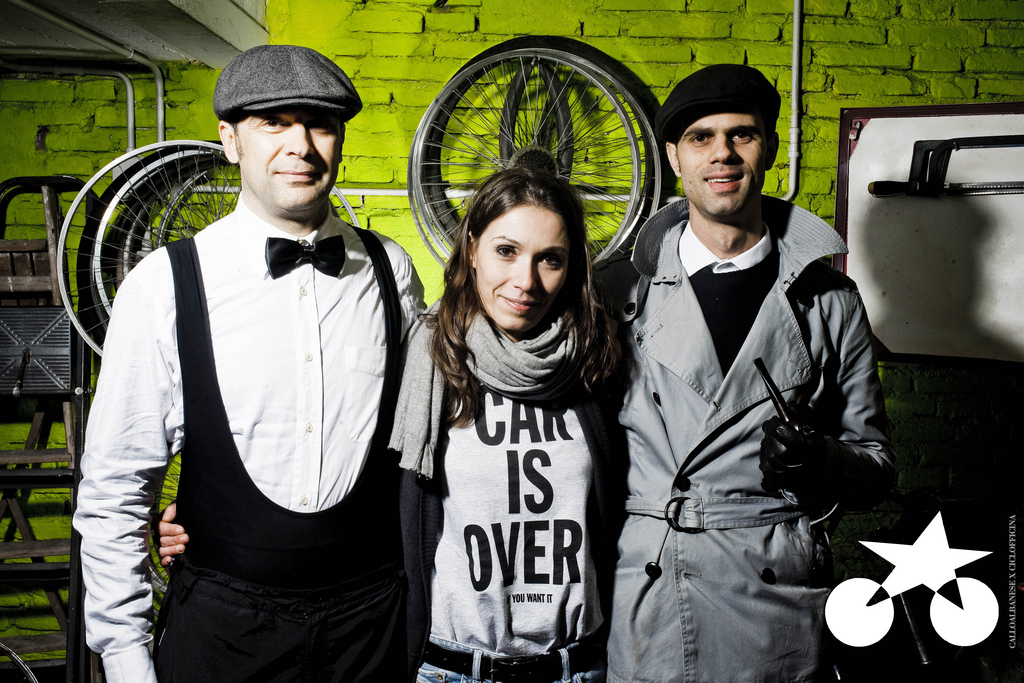Fabrizio Barca is one of the most interesting policy makers in Europe. He receives a lot of media attention since 2011, when Mario Monti appointed him Minister of territorial cohesion. People interested in public policy, though, have been following him for much longer. He has a track record of delivering well-thought through, ambitious, elegant policy packages. I have been following his work for almost twenty years. Initially I read his writings and discussed them with friends and colleagues, some of whom worked with him. Later, we started meeting up in person. When I am in Rome I like to look him up and check what he is up to.
In 2013 the experience of the Monti government ended. Fabrizio went back to his job as director general of Treasury and turned his attention to inner areas (“aree interne”). Aree interne are territories that happen to be far from certain key public services: high schools, hospitals, railway stations. They include four thousands villages an small towns, accounting for 60% of Italy’s surface and 25% of its population. They are hamlets in the hills and mountains, meadows, fields, grazing areas. They are often places of beauty, rich in local culture and history. Just as often, they experience trouble. People leave; employment decreases; services get harder to find. Marginal land is abandoned, paving the way for environmental problems like landslides or flash floods. Innovation stagnates.
Inner areas are clearly important. It is understandable that the Italian state wants to improve their conditions. What I don’t understand is why Fabrizio feels the need to work on them himself. In the last fifteen years, development economists have looked in the opposite direction. Cities, they say, are of strategic importance. In 2014, they were home to 53% of humans, and produced 80% of the workd’s GDP (World Bank). For developed countries, these percentages are much higher still. For example, in the Euro area 76% of the population lived in cities in 2014.
Italy is a little less urban than most developed countries (“only” 69% of Italians lived in cities in 2014). But there, too, cities are strategic. Consider Milan. Its metro area is home to a little over five million inhabitants, one Italian in twelve. In 2004, this area had a GDP of 241 billion Euro: that’s more than the whole of Austria, and 13% of Italy’s.
It’s not just GDP. Milan and the other urban areas produce almost all of Italy’s exports, that is, at the end of the day, our contribution to the world’s economy. Chemicals. Textiles and clothing. Rubber and ceramics. Vehicles. Industrial automation. Italy is a manufacturing economy, one of the most important in the world. The agri-food industry, too, likes to represent itself with images of green fields, but it sells transformed products. In 2014 Italy exported transformed food products, beverages and tobacco for about 28 billion Euro; it imported some for about the same value. The Italian trade balance for food products, so, is about zero. The industrial automation industry exported 74 billion worth of production, and recorded an active balance of over 50 billion Euro (ICE). Most companies in these industries are in urban areas, not in remote areas.
Italy is no exception. Cities produce more per capita wealth then the countryside; and large cities produce more than small ones. Two physicists, Luis Bettencourt and Geoffrey West, have found an exact mathematical relationship between the size of cities and their production (PMAS). The average citizen of a metropolis produces and earns more than that of a smaller city. A city with n inhabitants pays wages proportional to n to the 1.12-th power. This means that, as city sizes grows, per capita income grows too. All other things being equal, the average wage in a 10-million inhabitant city is about 30% higher than in a 1-million inhabitants one; and about 75% higher than in a 100,000 inhabitants one.
This sort of growth is called superlinear. It surfaces in many aspects of urban life, from banking deposits to electricity consumption. In particular, it is typical of variables tied to innovation, like number of patents per year or R&D employment levels.
Why are cities so successful? According to Bettencourt, cities are “social reactors”. They behave more like stars (that are nuclear reactors) than like living creatures (Science). Their ability to produce innovation and wealth depends on the number of connections that they can bring about. Commerce, science, manufacturing are all network phenomena, because they depend by the exchanges across people and organisations. Just think about it: as more peoplem get involved, the number of possible exchanges across them grows fast. One individual can have no exchanges. Two people, Alice and Ben, can give rise to at most one exchange. If we add a third person, Charlie, we get three possible connections: Alice-Ben, Ben-Charlie and Charlie-Alice. If we add a fourth one, we get six connection, if we add a fifth one, we get ten. As we get one million people, we’ll have close to five hundred billion connections (check for yourselves!).
The wealth of possible connections enable specialization; the presence of specialised people and organisations enable a higher productivity. The mathematics of connectivity points to cities as humanity’s future. The world’s poor seem to agree, as they are moving there en masse. According to ecologist and digital pioneer Stewart Brand, they are motivated by access to better services (especially education); and the sharp increase in personal freedom that city dwellers enjoy with respect to villagers. This is especially true for women. Brand claims these benefits accrue to all city dwellers from arrival day, even if they move to slums. His data are clear: upon arrival, urban migrants tend to stay afloat by being active in the gray economy. In a couple of decades, though, they tend to become legitimate. Their children almost always attend high school, and aspire to enter the middle class.
This brings me back to my conversations with Fabrizio Barca. Why is the most interesting policy maker in Italy not working on cities? Why this fascination for hamlets, mountains, and valleys?
A few weeks ago I asked him a direct question. He answered that he thinks inner area are the future – not the world’s, but Italy’s. For three reasons.
- They make up most of the country’s surface, and they are similar to one another. Val Basento in Sicily and Val di Vara in Liguria face similar problems. Their local leaders understand each other, and can collaborate, exchanging notes and know-how. A policy for inner areas is well placed to scale to the national level.
- Italian cities are not like that. They are different from each other, and from cities elsewhere in Europe. Naples is the only true metro area in the country. Milan has some of the functions of first-tier European cities (design, finance, creativity), but not their size. Rome is a touristic-bureaucratic-religious conglomerate. No generalization is possible. Each city needs its own set of recipes.
- Above all, Italian inner areas show signs of being vital. They are generating top-notch initiatives in culture, tourism, agri-food. School is holding out, and often even makes progress, adding new technology to the mix. Even the territory’s partial abandonment becomes an opportunity, because it means that inner areas have space. The local communities pay attention to what you do there. They hunger for innovation. There are low-cost physical spaces, often beautiful or interesting, to host new ideas and new people. For example. you could get 1,700 decommissioned railway stations for free. Honest.
In these terms, Barca’s story seems convincing. He does have tons of data to support it. So, humanity’s future is in inner areas. But then, the story that emerges from the works of the World Bank, Bettencourt and West, and Brans is also convincing – and it, too, has data to support it. So, the future is in cities, their universities, their labs, and their slums. Can these two stories be true at the same time?
I think they can. I propose that territorial innovation needs freedom. And that means places where you can try new stuff out without too many constraints. Where social norms approve, or at least do not condemn, who tries to walk the road less travelled. Where not every single inch of terrain is already claimed by powerful, well-organized stakeholders. If I look around, I see that the innovative spaces tend to be more free than average. You’ll find freedom in the slums described by Brand, because the state gives up on maintaining a tight control on every aspect on their economic life. You’ll find it in Silicon Valley’s web farms and data centers, because their activity is too fast and too global for traditional regulation. You’ll find it in outer space, where Elon Musk and the other space billionaires build their own piece of the future. And yes, you’ll find it in inner areas, disclosed by the availability of cheap, beautiful places and by low population density. These places are the frontier of contemporary society, our West, our Lebensraum.
If I’m right, then the unifying narrative of 2015 goes something like this. Smart, ambitious, restless people are on the run from closed spaces, where powerful organizations (political actors, the state, corporates) limit their effectiveness. Where do they go? Where they always have: they go to homestead the frontier. Frontiers are weird places, full of contradictions and merciless at times. But they do offer chances of social mobility to individuals, and R&D labs to society as a whole. Italy has an extra frontier: inner areas. We can use it to innovate on the environment, tourism, leisure, culture. It’s a nice card to have up your sleeve. I hope we’ll play it well.
Photo: Mauro Mazzacurati su flickr.com
An Italian version of this article was published on the online magazine CheFuturo


